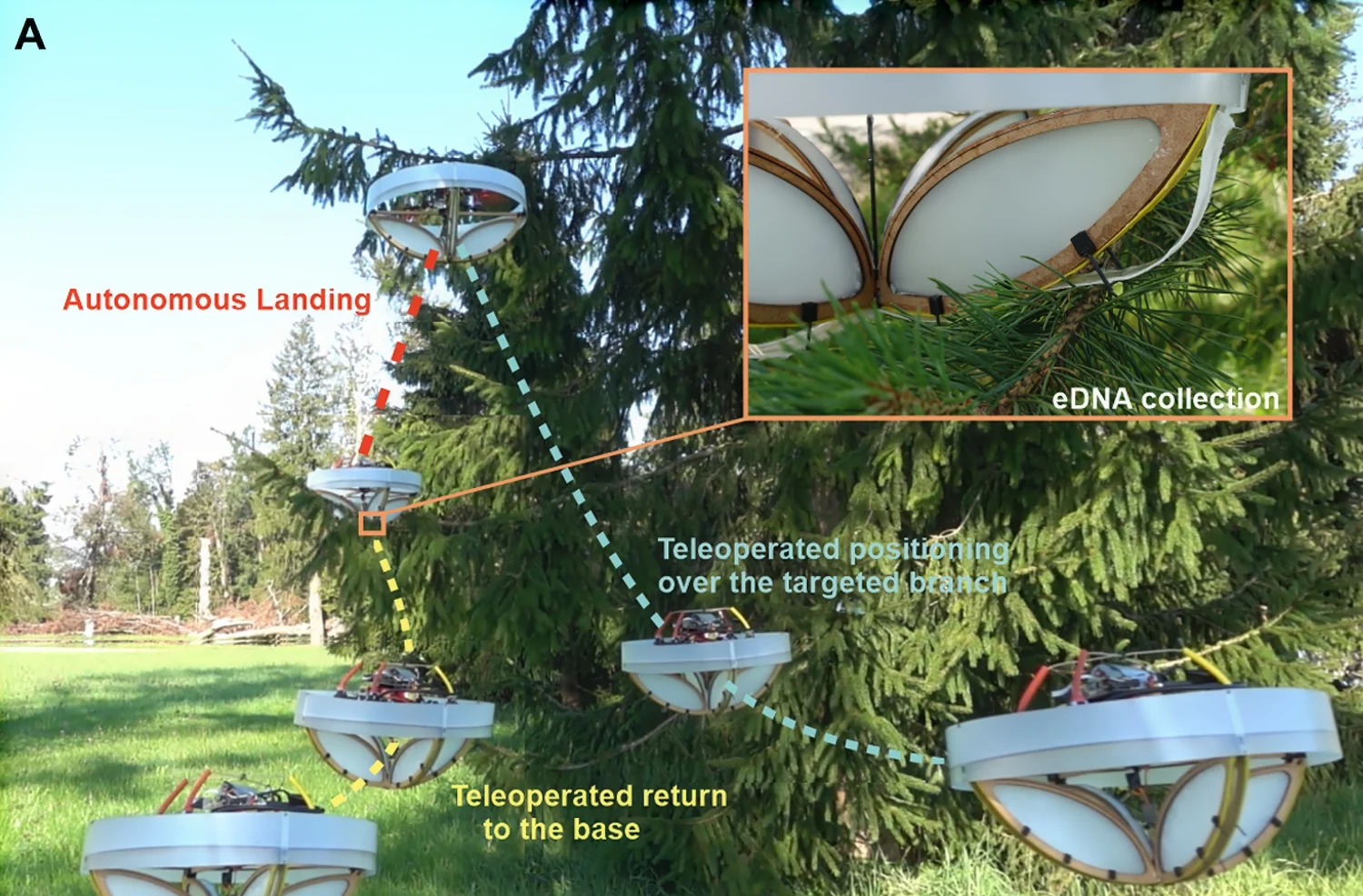
Swiss scientists have developed a proof-of-concept method to collect environmental DNA (eDNA) from high-arching forest canopies, an under-observed habitat. Rather than hiring skilled climbers to risk their lives to grab a little bug and bird DNA, the team flew a collection drone into the trees to capture genetic material — giving them a clearer picture of the area’s organic breakdown.
The researchers used a quadcopter equipped with a sticky collection cage. But since tree branches can bend at the slightest touch — and the drone needs to touch the branches to collect DNA — it has a haptic-based control scheme using force sensors to measure the pressure between the drone and the branch. Then, it adjusts its landing accordingly, leaning against the branch gently enough to avoid flinging valuable material to the ground.
The drone’s cage then grabs samples with a sticky surface made from “adhesive tape and a cotton gauze humidified with a solution of water and DNA-free sugar.” The cage spends around 10 seconds leaning on each branch and collecting eDNA before zipping back to the base, where the scientists retrieve the samples and ship them to a lab. The experiment’s drone successfully collected enough genetic material to identify 21 animal classes ranging from insects and mammals to birds and amphibians.

Science
However, the scientists make it clear this is a work in progress. For example, on the last research day, the team noticed a drop in eDNA detection because of rainfall the night before — suggesting the method only tells them which creatures visited since the last downpour. Additionally, they noted unexplained differences in the performance of their two collectors, highlighting the need for more research on equipment variations.
The researchers hope their work will make it easier and cheaper for environmental biologists to learn which critters live in some of the hardest-to-reach places. The approach could eventually help the scientific community understand how environmental changes affect biodiversity, perhaps helping identify endangered or vulnerable species before it’s too late.
All products recommended by Engadget are selected by our editorial team, independent of our parent company. Some of our stories include affiliate links. If you buy something through one of these links, we may earn an affiliate commission. All prices are correct at the time of publishing.













